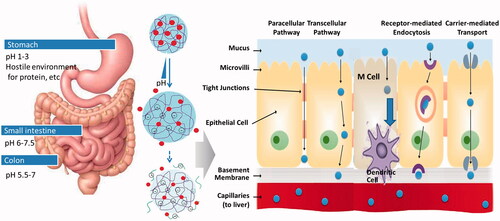Figures & data
Table 1. Categories of pH-responsive hydrogel with example polymers and applications for oral drug delivery.
Table 2. Categories of pH responsive nanoparticles with example materials and applications for oral drug delivery.
Table 3. Examples of relative bioavailability improvement of insulin and CyA after oral administration of different pH-responsive carrier.

